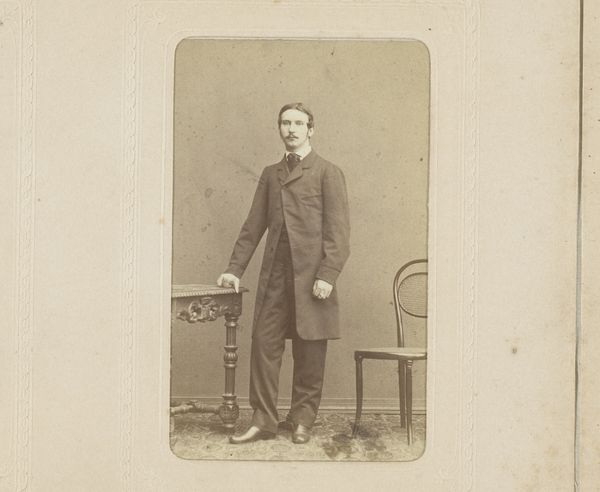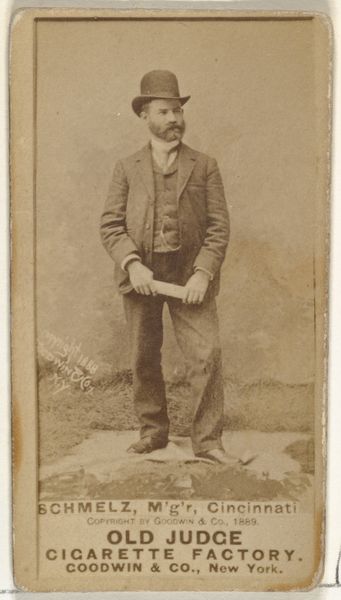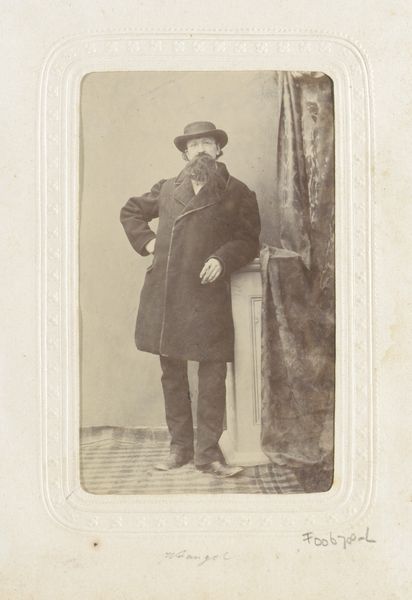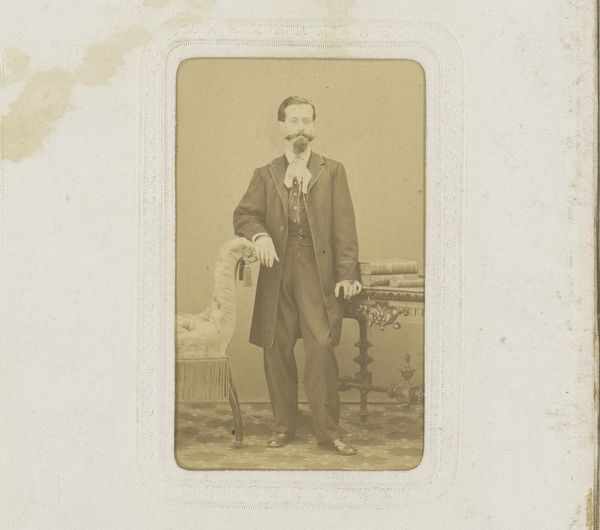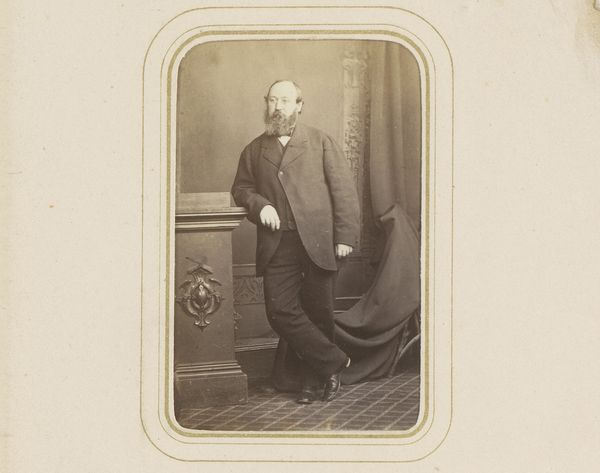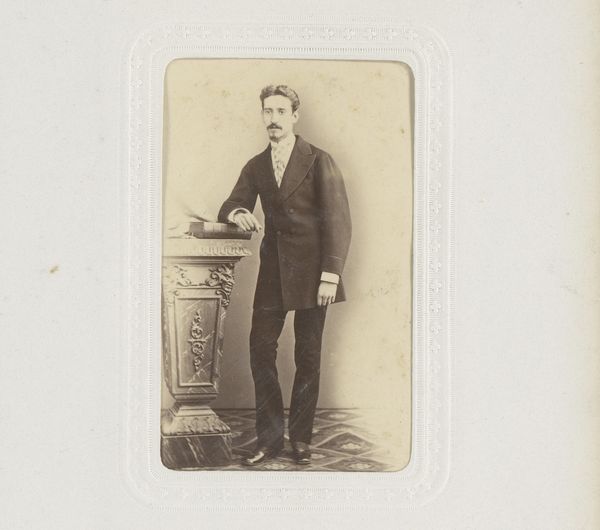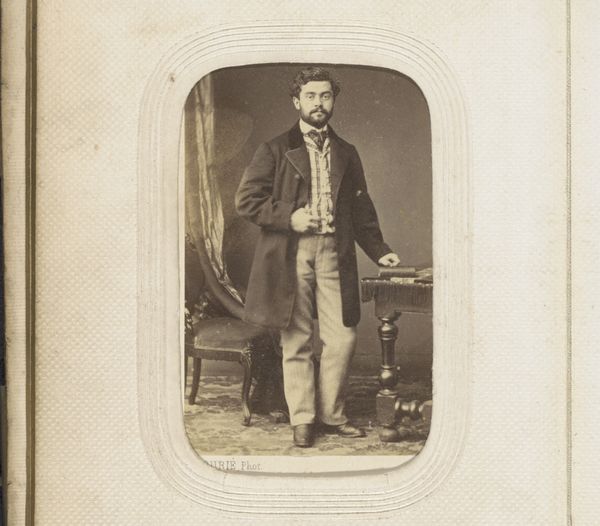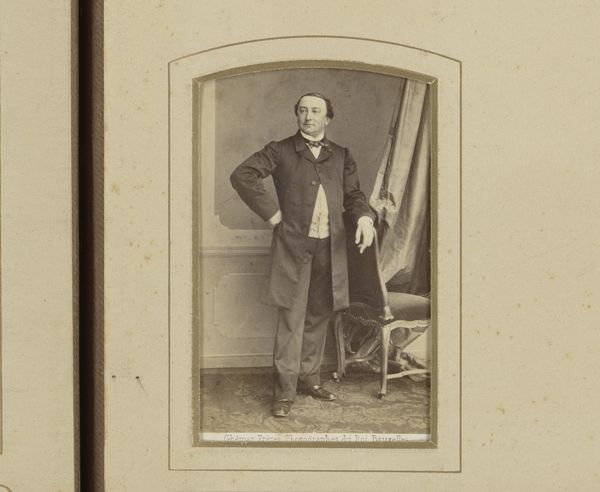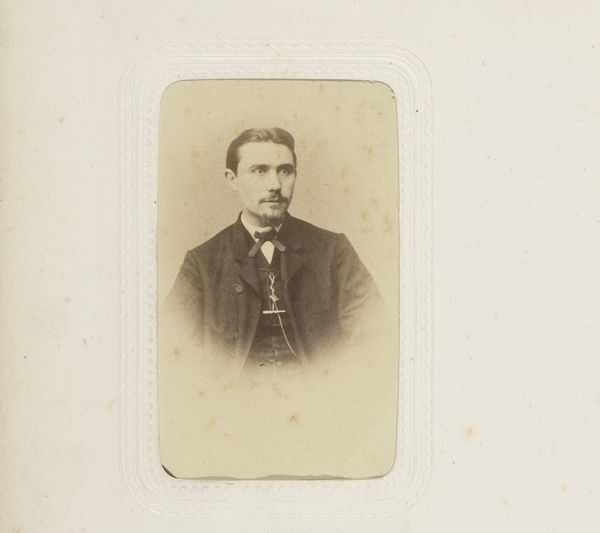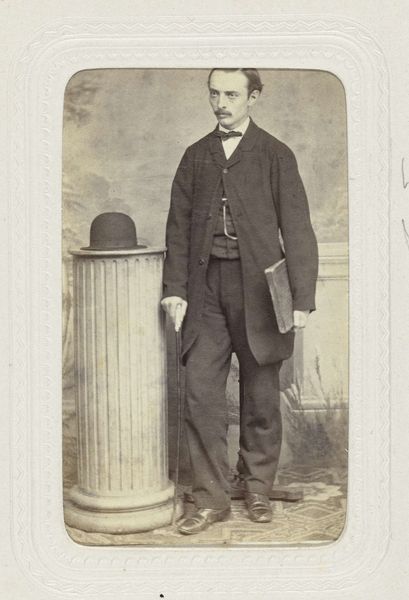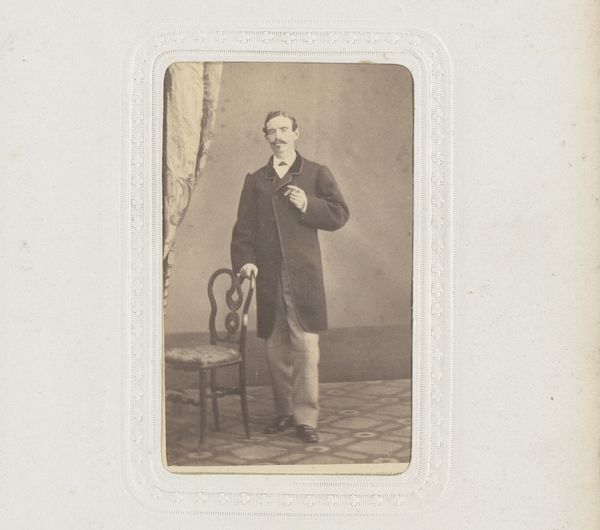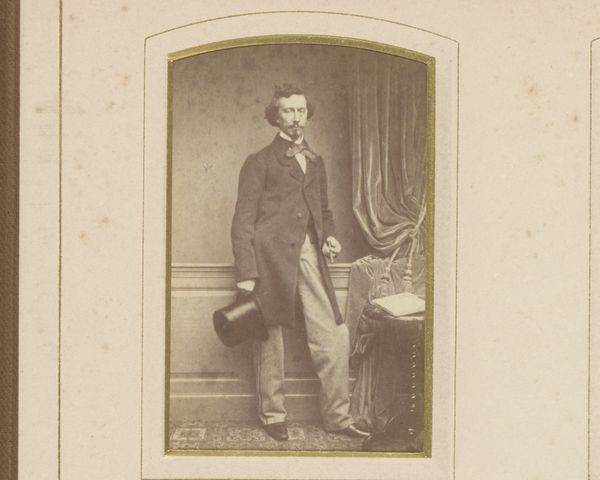
photography
#
portrait
#
photography
#
19th century
#
academic-art
#
realism
Dimensions: height 84 mm, width 51 mm
Copyright: Rijks Museum: Open Domain
A. Lüsson created this small portrait of a man sometime in the 19th century using photography. It's an example of the carte-de-visite, a type of photograph that became incredibly popular as a calling card or keepsake. The man’s relaxed pose, with hands in his pockets and a pipe in his mouth, suggests a growing sense of informality in portraiture during this period. Made in a studio, we see props such as the small decorative table that allude to his taste and wealth. Photography democratized portraiture, making it accessible to a wider segment of the middle class, and these cartes-de-visite were often collected in albums, reflecting new social practices of display and memory. Understanding this image requires looking into the history of photography, the rise of the middle class, and the changing social customs of the 19th century. Historians consult photographic archives, social histories, and museum collections to better understand these cultural shifts. We begin to appreciate that the meaning of art is always contingent on social and institutional context.
Comments
No comments
Be the first to comment and join the conversation on the ultimate creative platform.
